open main page for all woods open page 2 for articles
CROTCHES
compression wood is a portion of a tree where the wood fibers have been compressed due to stress in the tree. This can be caused by irreglar growth such as a tree that grows on a riverbank and then tilts as the bank slides into the water, causing the tree to have compressed wood in the side next to the water because the tree is bent over in that direction.
Crotches are an extreme form of compression wood. They are caused by the forces exerted within the tree to support a main branch where it joins the trunk, and of course the bigger the branch, the more the compression. The compression decreases as one moves away from the point where the branch meets the trunk, so crotch wood frequently exhibits an extreme degree of grain variation. The compression process that strengthens the tree so it can support the branch causes the wood fibers to twist and compress, creating various figures and grains that can be very beautiful. Unlike burls, crotches have grain that, while quite distorted, is basically the same grain as the other wood in the tree and does not tend to the extreme swirls and eyes of burl wood, but even so, crotch wood can be wonderful to behold.
Crotch wood is typically harder and more dense than a straightgrained portion of the same tree. Depending on the apprearance, a crotch may be called a "flame crotch" or a "feather crotch" (and less frequently as "plume", "roostertail" or "burning bush") and frequently the crotch area is somewhat symetrical on both sides of the branch so that a crotch piece cut parallel to the bole of the tree will produce a look similar to that of book matching. Terms such as "feather" and "flame" should not be relied on if you haven't actually seen the wood, as they are used VERY freely. I've seen one gun-stock maker who states on his web site that he always calls all crotches flame crotches because "it sounds more impressive".
In veneers, crotch sheets are seldom found in larger sizes (although I have seen some HUGE mahogany crotch sheets --- I'm talking 3 feet by 5 feet), and mahogany and walnut species dominate the field of crotch veneers because they are the main trees that consistently produce large crotch areas. In mahogany, enough veneer has been produced to be able to establish grain pattern types. Thus one can select a swirl, a feather, a rat-tail, and others. Mahogany has always been the classic crotch because of consistency, size, and soundness. The price range is moderate to expensive.
Examples:
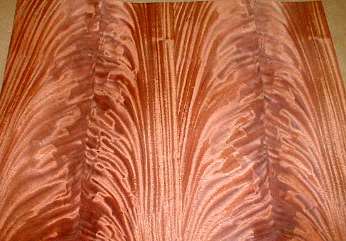
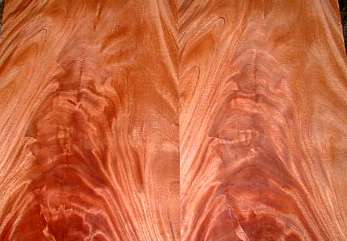
Two sets of African mahogany crotch veneer pairs
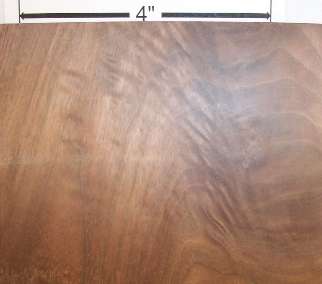
a walnut crotch plank that I have find-sanded to a high gloss. The wood is smooth as glass on the surface on the right side of the piece where the compression is greatest. This is in total contrast to the usual somewhat grainy surface of walnut and is an excellent example of the density of tension wood.
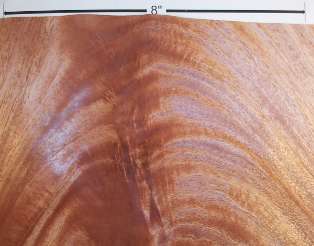
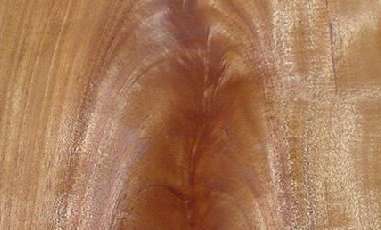
African mahogany crotch veneer pieces
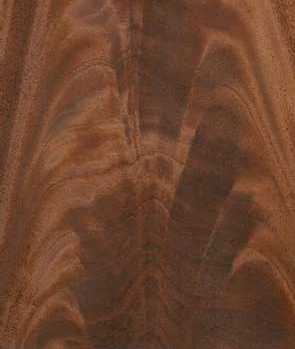

genuine mahogany crotch veneer and black walnut crotch veneer
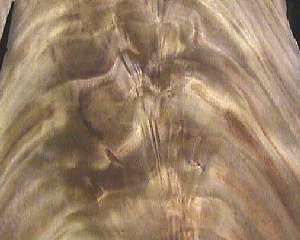
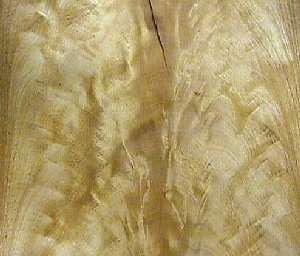
etimoe crotch veneer and afrormosia crotch veneer


cherry crotch plank and satinwood crotch veneer
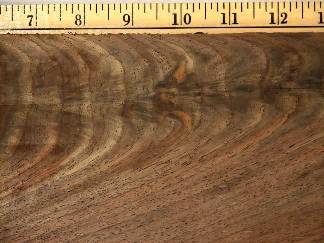
a very nice, colorful walnut crotch
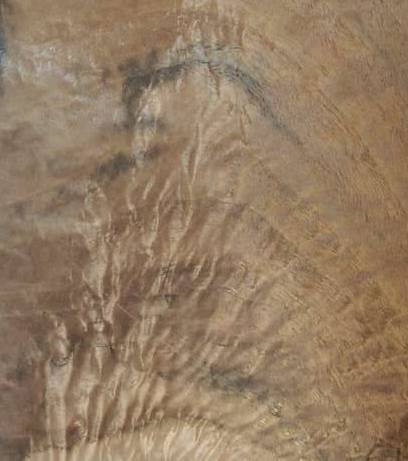
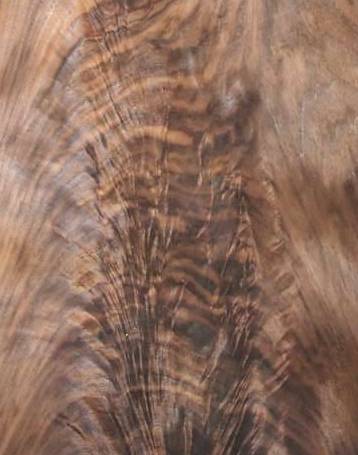
walnut "flame" or "feather" crotches

another walnut fancy crotch














